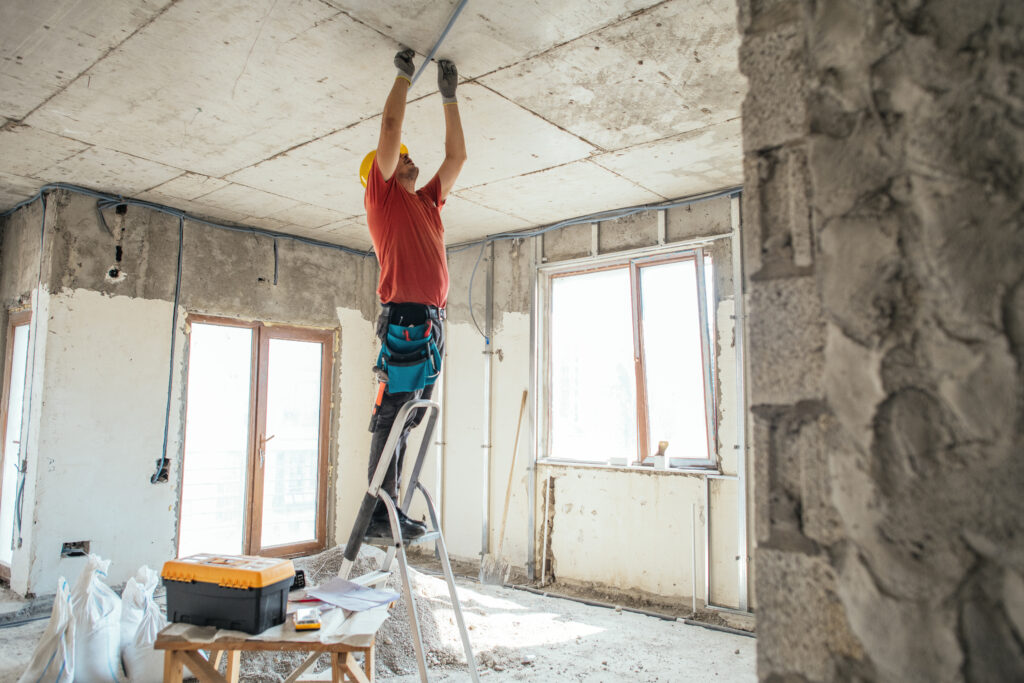Latest News
Land and Property Professionals
We sell, rent, manage, survey, plan and advise...what can we do for you?
We sell, rent, manage, survey, plan and advise...what can we do for you?

Robinson & Hall can undertake surveys on a wide range of assets including agricultural, industrial, commercial and residential properties.
Many people will be familiar with our pre-purchase property condition surveys but may not be aware of the range of additional surveys we can offer clients. Our surveys help keep property assets safe and operational and to reduce short and long-term costs by highlighting maintenance needs and thus preventing unnecessary damage and deterioration.
Some of the services we can offer are as follows:
Pre-acquisition Survey
This is a comprehensive assessment of the condition of a property (typically referred to as a detailed building survey) used to assess the condition before purchase (pre-purchase/acquisition survey), detailing any potential and current liabilities. It can also be linked to the repairing and lease termination liabilities or as part of a valuation exercise.
Schedule of Condition
This is prepared before a lease commences in order to record the condition and identify defects before a tenant takes on the lease, and when correctly referenced to the lease covenants, can limit liability with regard to future dilapidations. We prepare comprehensive, written Schedules of Condition cross referenced with photographs for inclusion in the lease

Condition Overview Report
This is a less comprehensive survey and report used to record as a snapshot at a point in time the current condition of the primary elements of an existing asset as evidence of the state of repair. It also flags up any significant issues which might need attention.
Building Defect Report
This focuses on specific issues or known concerns and aims to identify the cause of defects and recommends cost effective remedial measures to address the issue and avoid further deterioration. Typically, this could be existing problems with damp, the condition of a roof, concerns over cracking, and leaning or bulging walls.
Lease and Warranty Compliance Survey/Dilapidations
This type of survey is used to assess whether a tenant is undertaking a regime of maintenance and repair in accordance with the terms of the lease and to ensure warranties are maintained. These inspections can be undertaken during the term of the lease. If a tenant fails to keep the property in repair, an interim Schedule of Dilapidations (Repairs Notice) is served, thereby ensuring that the tenant carries out the repairs that are identified in the lease.
A survey can also be undertaken in the final months of the lease or upon its expiry, and a terminal Schedule of Dilapidations can be issued to highlight any repairs, redecoration, or reinstatement works that the tenant is obligated to complete before vacating the property.
Planned Preventive Maintenance (PPM) Assessment
This is used to assess the maintenance requirements of an asset over an agreed period of time (these are often for a 5-year period but can be up to 30 years’ cost projection) in order to enable a budget to be set and a structured plan for maintenance to be developed and implemented over the medium term of the asset’s lifecycle.
Often derived from an asset register (including maintenance history), and from the Operation and Maintenance Manuals (O&Ms) and a survey, a PPM strategy of cyclic and periodic maintenance, which factors in the anticipated lifecycle of key elements, is produced and prioritised to provide information on a year-on-year projected expenditure.
This can be combined with Long Term Asset Replacement (LTAR) evaluations which are an evaluation of key asset components to assess their individual life cycle and future replacement as a budgeting tool for asset replacement (reducing the risks of unplanned asset failure).

Reinforced Autoclaved Aerated Concrete (RAAC) Survey
Although recent concern regarding RAAC concentrated primarily on the school estate following well publicised failures, the material has been extensively used across all areas of construction in buildings constructed or modified between the 1950s and 1990 and, with records on usage being incomplete, may be found in all areas. Whilst not considered to be inherently dangerous, it is now clear that RAAC which has been poorly manufactured, installed or maintained is at greater risk of failing.
We can offer a site inspection to identify whether you have RAAC in your building (or recommend further investigation where this cannot be clearly determined).
For more information about any of the surveys we offer and to discuss how we can help you, please contact me.
Back to articlesFor further information please contact: